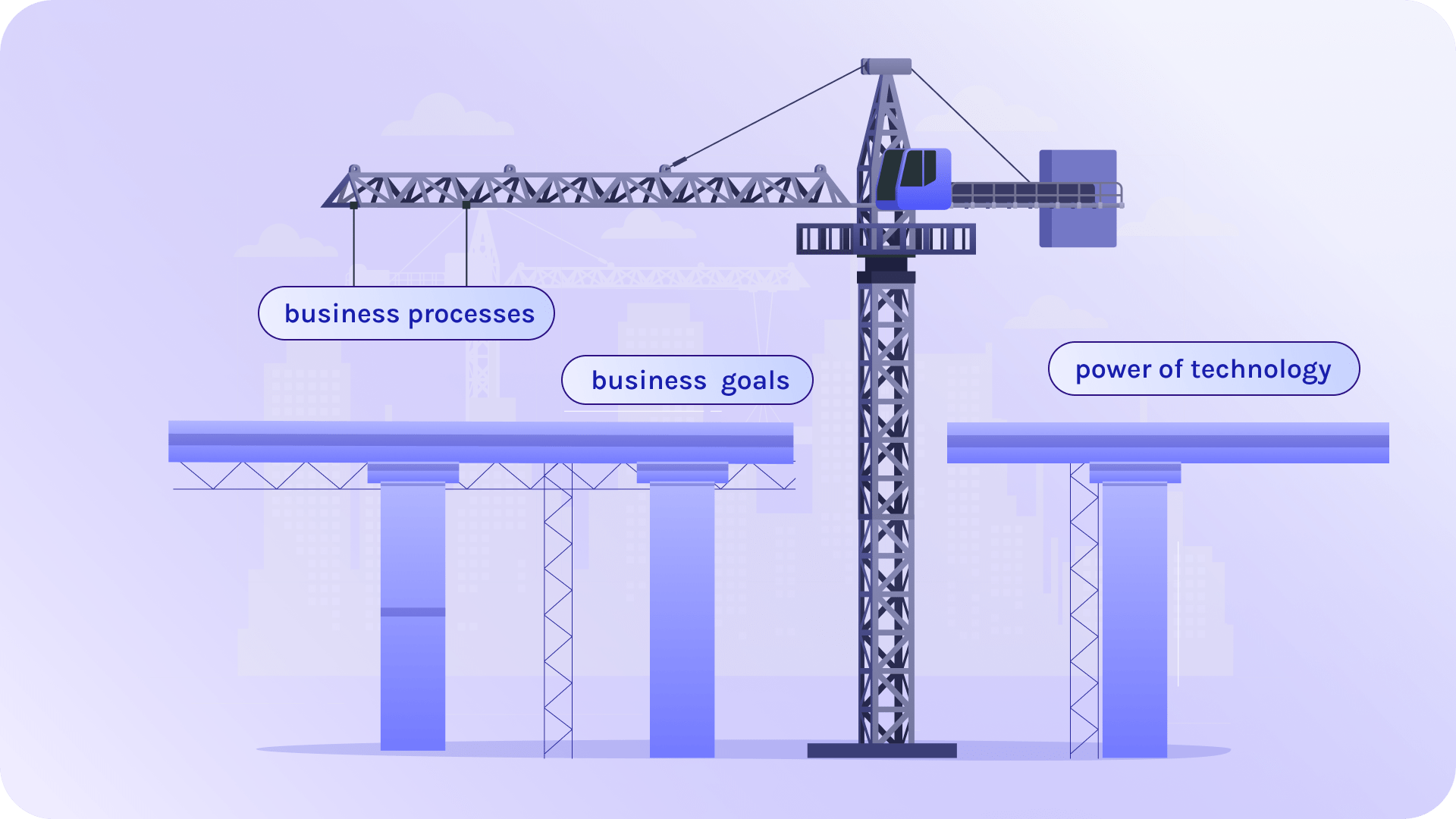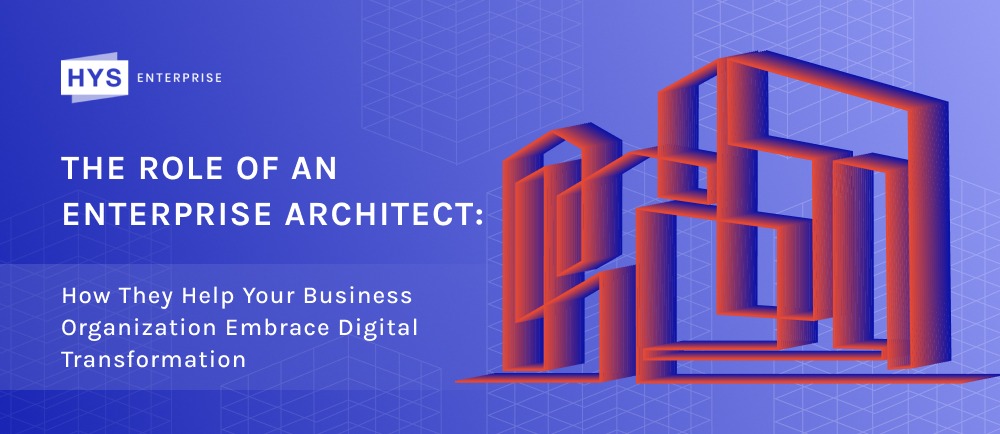Defining the Role of an Enterprise Architect
You can think of the role of an enterprise architect as a binder, connecting the dots between an organization’s business goals and its technological infrastructure. But what exactly do they do? At its core, an EA is responsible for designing and implementing an organization’s enterprise-wide technology strategy and architecture. They have a comprehensive view of the entire organization, from its strategic objectives to its technology capabilities, and they have huge impact in aligning the two.
The role of an EA extends far beyond just technology implementation; it’s about understanding the strategic objectives of the organization and translating them into practical technology solutions. Think of an EA as a bridge builder, linking business processes and goals with the power of technology. This bridge ensures that the organization’s IT initiatives are not only aligned with its overarching strategies but also contribute directly to achieving those objectives.
One of the cornerstones of an EA’s role is the creation and maintenance of an architectural framework. This framework acts as a blueprint that guides the development, deployment, and management of IT systems within the organization. It encompasses various components, including the organization’s existing and target state architectures, technology standards, best practices, and guidelines for implementing IT solutions.
With a solid architectural framework in play, organizations can steer through the maze of tech options more smoothly. This helps them make sure their tech investments aren’t all over the place but are instead smart choices that match their long-term goals. Let’s now explore an enterprise architect’s contribution to a company’s processes.
Unlocking Value: How Organizations Benefit From an Enterprise Architect’s Work
The value that an EA brings to the table is multi-faceted and extends across various dimensions of an organization’s operations.
1. Strategy Alignment
EAs have a distinct skill set that enables them to understand an organization’s strategic goals and translate them into a practical technology roadmap. This alignment ensures that technology initiatives are not isolated but strategically contribute to the overall business objectives.
2. Architecture Design
At the core of an EAs role lies the design and maintenance of an enterprise-wide architectural framework. This framework delineates the structure, components, and relationships among various IT systems and applications. It serves as a guiding principle for technology decisions and ensures consistency throughout the organization’s IT landscape.
3. Technology Evaluation
In a rapidly evolving technological landscape, staying up-to-date with emerging technologies is crucial. EAs evaluate new and emerging technologies, conducting feasibility studies and recommending their adoption to enhance business processes and achieve strategic goals.
4. Standards and Governance
EAs establish technology standards, guidelines, and governance processes to guarantee compliance, interoperability, and security across the organization’s IT infrastructure. This contributes to a unified technology environment that lowers risks and optimizes efficiency.
5. Risk Management
Technology is not without its risks, from data security to compliance issues. EAs identify and manage these risks, protecting critical business operations and ensuring that technology implementations are conducted smoothly.
6. Collaboration and Communication
Acting as intermediaries between business and technology teams, enterprise architects facilitate communication and collaboration. They ensure that both sides comprehend each other’s needs and requirements, fostering a more productive and gathered work environment.
7. Change Management
Technological advancements frequently need organizational changes. Enterprise architects offer guidance and assistance during technology implementations, upgrades, and migrations, streamlining the transition process and minimizing disruptions.
8. Continuous Improvement
An organization’s technology landscape should never remain static. Enterprise architects monitor the effectiveness and efficiency of IT systems, defining areas for improvement and suggesting changes that optimize both business processes and technology investments.
Now that we have a clear understanding of the fundamental role of an enterprise architect, let’s delve into their contribution to the effective execution of digital transformation within organizations.

How Do Enterprise Architects Contribute to Embracing Digital Transformation by Business Organizations?
EAs play a crucial role in the process of digital transformation. Thanks to their expertise and experience, business organizations can make effective decisions regarding technology investments and their integration into the current enterprise framework. Enterprise architects are responsible for conducting the necessary modeling to reshape the operational structure, chart business capabilities, and synchronize technology with the organization’s strategic objectives. Here is deeper look at significance and contribution of EAs to digital transformation:
1. Cost Efficiency
EAs are cost-conscious. They assist organizations in optimizing technology expenditures, assuring that digital transformation initiatives are cost-effective and provide a substantial return on investment.
2. Raised Flexibility and Fast Time-to-Market
With the increasing complexity of technology and the rapid rate of innovation, architects can have a crucial impact on assisting and overseeing complicated system environments, whether they are on-premises, hybrid, or multi-cloud. EAs can also help define how architectures and practices should be structured and how training should be directed to make the initiatives successful.
3. Systematic Integration
In an increasingly interconnected digital landscape, EAs specialize in system integration. They rate the existing technological ecosystem within an organization and define opportunities to stabilize and streamline processes. This integration of systems and data sources is a key for achieving operational efficiency and agility.
4. Adaptable Governance
Governance is crucial in digital transformation efforts. These programs need a flexible governance approach, and enterprise architects are vital here. EAs can manage updates on keyboards for leadership and adjust the roadmap based on feedback while maintaining a continuous delivery process.
5. Development of Talents
One of EAs’ responsibilities is to keep IT talent motivated and recruit skilled professionals. This includes identifying training needs, soft skills, career paths, and occasionally presenting challenging opportunities.
Every digital transformation journey needs an EA to set a practical plan that will help put in well-picked tech solutions, manage people and talent, and handle lots of stakeholder coordination. It requires syncing with the leadership team, rules, and adjustment to the business needs. EAs are responsible for the creation and maintenance of comprehensive technological frameworks and roadmaps. So let’s explore the tools that enterprise architects employ to achieve successful digital transformation.
Tools Used by Enterprise Architects
Roadmap
One of the keys to fruitful digital transformation is developing a roadmap. Roadmaps have a weighty part in strategic planning. They empower enterprise architects to assess business capabilities in line with the strategy, recognizing implications, and suggesting necessary technological investments.
Roadmaps connect technological investments, desired outcomes, key milestones, and budget requirements as well as enable organizations to adapt their strategic plans. Enterprise architects can construct various investment scenarios, assess alternative methods to attain specific business goals, and make comparisons based on factors like cost, risk, benefits, and resource allocation.
A notable advantage of utilizing roadmaps is their capacity to accommodate unforeseen developments. In the ever-changing realm of digital transformation, unexpected challenges and opportunities may surface. Roadmaps offer the flexibility to make course adjustments while maintaining the long-term objectives as a guiding principle.
TOGAF (The Open Group Architecture Framework)
Another important tool employed in the process of digital transformation is TOGAF (the Open Group Architecture Framework). This framework is globally recognized and widely adopted across various industries and enterprise architects leverage TOGAF, as it establishes a shared language and framework for collaboration, simplifying interactions with stakeholders, partners, and vendors.
Within TOGAF, the Architecture Development Method (ADM), which has been designed to deal with most system and organizational requirements, serves as a systematic roadmap for crafting and overseeing enterprise architectures. It expertly directs enterprise architects through multiple phases, starting with grasping business requirements and finishing with the creation of a complex architecture.
TOGAF also incorporates best practices and reference models, providing architects with guidance for making informed decisions, selecting suitable technologies, and ensuring perfect compatibility.
Successful digital transformation encompasses more than just technological shifts; it encompasses guiding in processes and organizational culture. TOGAF acknowledges the significance of change management and offers expert advice on how to proficiently oversee and communicate changes.
At first glance, roadmap and TOGAF may appear quite similar, but this is not the case at all.
TOGAF offers a well-structured framework and approach for the creation and supervision of enterprise architecture, a critical element for achieving successful digital transformation. In contrast, a roadmap functions as a strategic planning instrument, delineating the precise stages and achievements within the transformation voyage. Enterprise architects can integrate TOGAF into their arsenal to address architectural facets of digital transformation, whereas the roadmap plays a key role in maintaining the overarching transformation process and communicating its strategic course to stakeholders. Together, they represent indispensable elements for proper thriving of digital transformation.
To sum it up, enterprise architects play a crucial role in today’s tech-focused business world. They bridge the gap between business strategies and tech solutions and help organizations make the most of technology to succeed and stay competitive. In this era of digital transformation, their value is more vital than ever – they help companies embrace the future where technology and business go hand in hand. In HYS Enterprise we’ve been implementing diverse digital transformation solutions for over 10 years. Contact us to learn how our services can help your organization achieve digital transformation goals easily.
